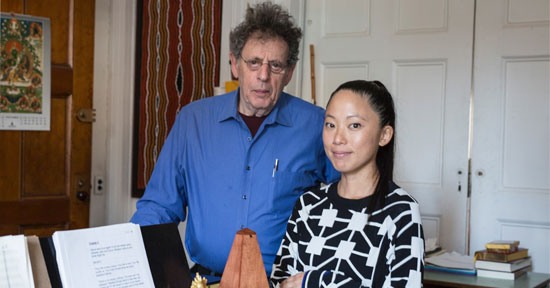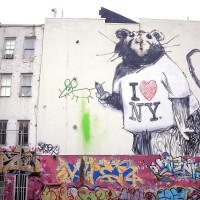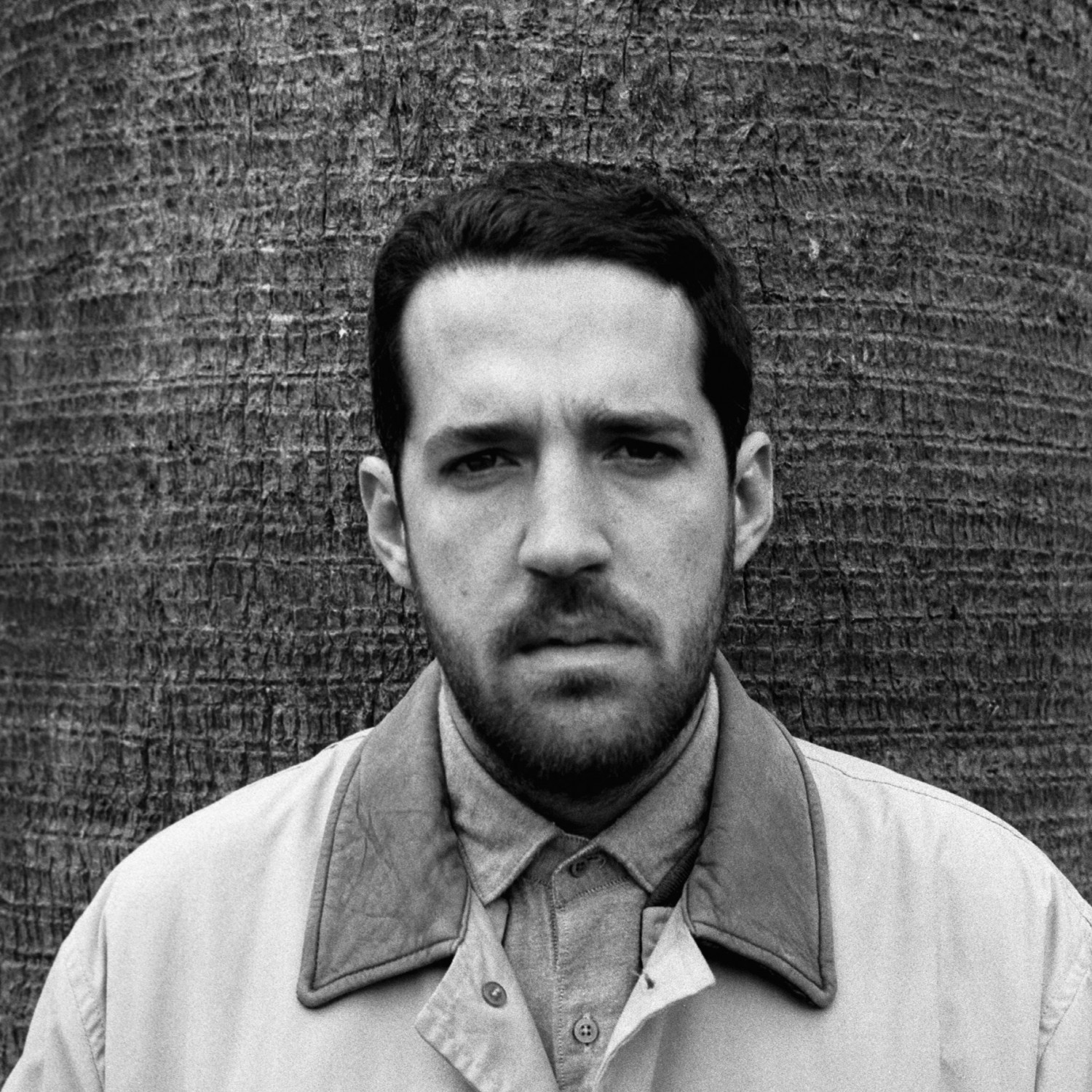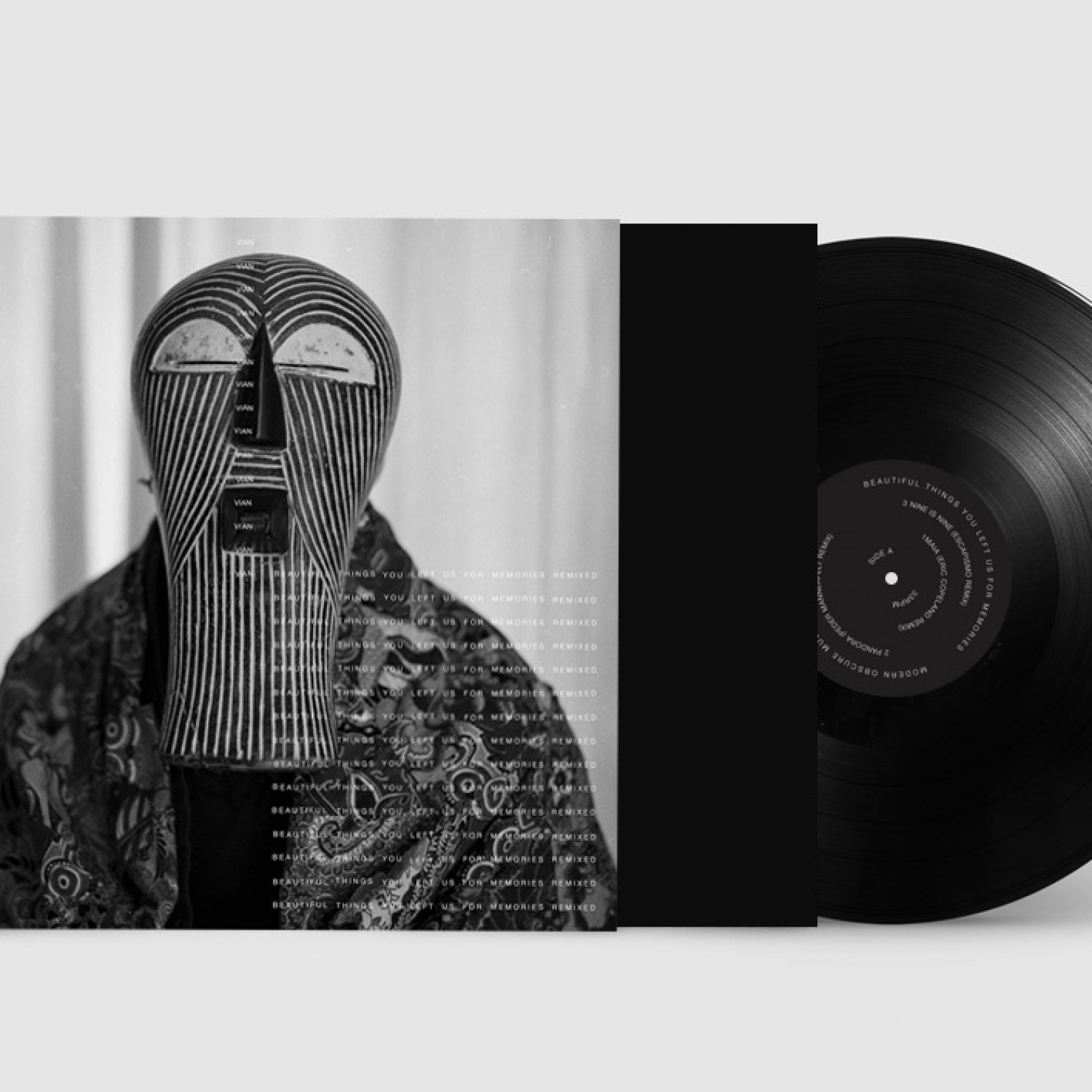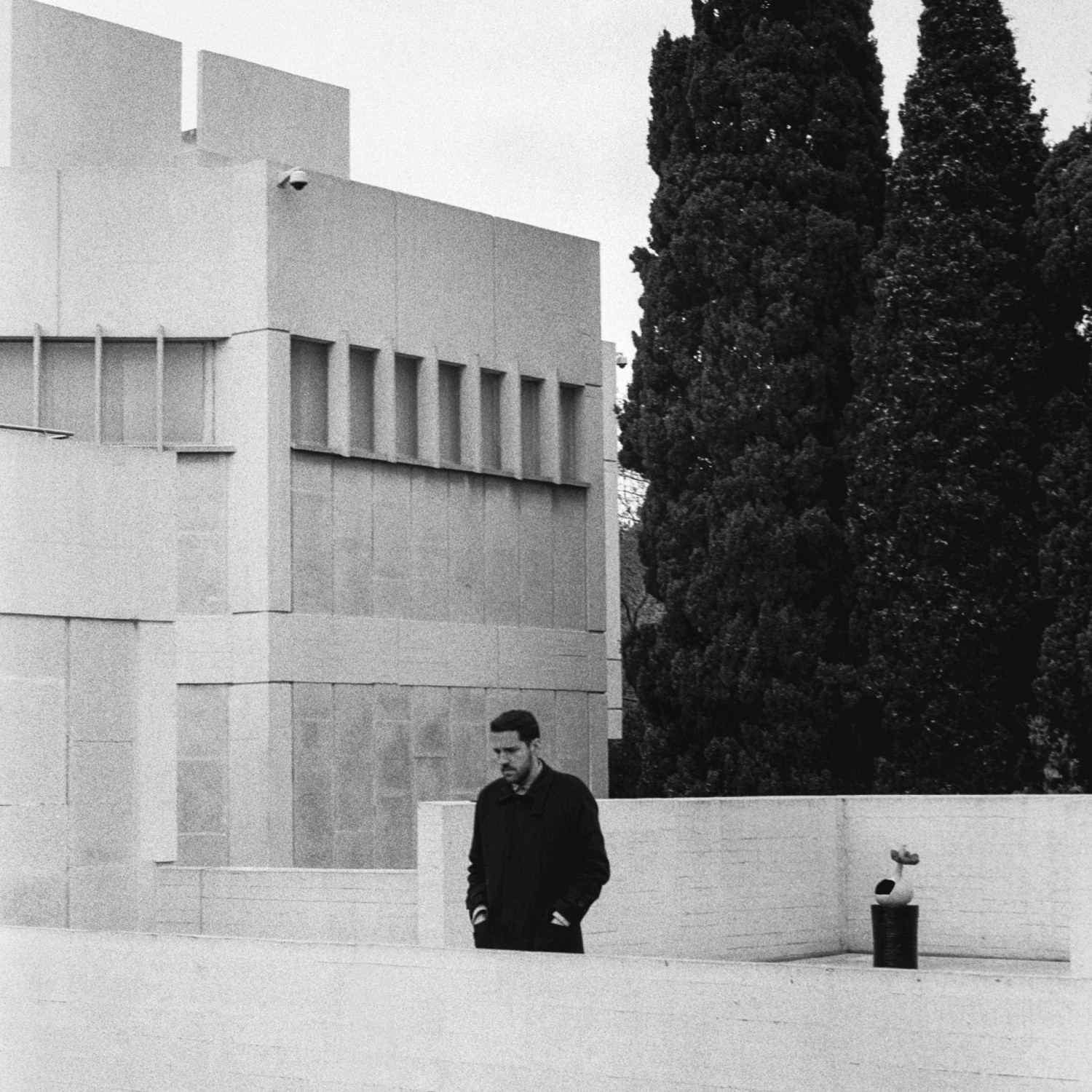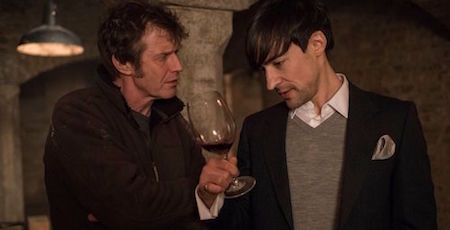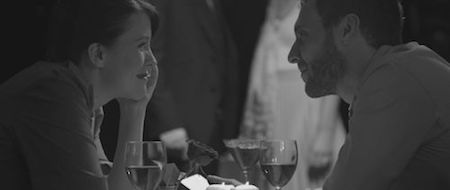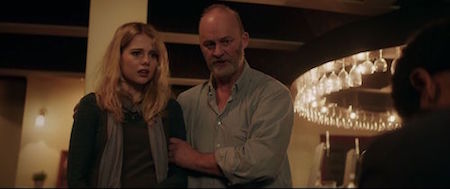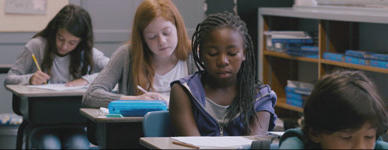- 6 years ago
-
On February 3rd and 4th, 2018, The Rolex Arts Weekend in Berlin presented the work of the protégés and the mentors of the 2016 – 2017, Rolex Mentor and Protégé Arts Initiative.
Rolex aim is to pair young artists from all over the world with artistic masters, like the Peruvian artist Pauchi Sasaki and Philip Glass.
This program is focused in seven disciplines: architecture, dance, film, music, theater, literature and visual arts. The artists spend a minimum of six weeks together with the mentor, working one-to-one and showcase the results at the end of the program.
Rolex mentor Philip Glass introduced his protégée on the stage at the Deutsches Theater. They presented an extract of her electro-acoustic project GAMA, as well as the suite OMAGUA, a compilation inspired by Peruvian traditional music.
Pauchi wore a dress made of black speakers on stage while she played a processed violin in this World Premiere show.
Latest News
- 6 years ago
-
Street artists are becoming more and more popular each year as graffiti is one of the most accessible forms of visual art for the masses. This genre of art has even become so popular that many superstar street artists work can now be found in some of the finest galleries across the globe! Graffiti involves a great level of skill and creativity and many also like to convey different social and political messages through their work. Below are some of the most influential street artists of our time and where you can view their work.
Banksy
Banksy is arguably the most influential street artists on our list and there are few people who have not heard of him. What makes Banksy so intriguing is that no one actually knows his identity! Much if his artwork features social and political undertones to it and people love the dark sense of humour which he injects into his work. His most notable work can be found in London and other areas of the UK, but you can also find his work in many different parts of the world including America and Israel. He does sometimes auction off his work but you’ll pay a pretty penny for it!
David Choe
While Banksy chooses to operate in secret, David Choe chooses to do the complete opposite! This graffiti artist, graphic designer and muralist is a flamboyant Los Angeles resident. He is famous for his wide range of work which varies from working on film sets to album covers. What’s more, he even painted a portrait of Barack Obama while he was running for president! You can find his work scattered across Los Angeles and also further afield in France, England and Japan.
Blek Le Rat
Blek Le Rat is a legendary Parisian graffiti artist who is held in very high regard by his peers. He is well-known for his stencil-based graffiti work which is thought to be the inspiration for many other artists, including Banksy. Blek Le Rat is often featured in galleries and museums around the world and has published many books with his famous artwork. You can view his work around the streets of Paris, New York, London and Berlin.
Eduardo Kobra
Eduardo Kobra is a Brazilian muralist who has made a name for himself creating huge, colourful and realistic murals. You can find his work over buildings and walls in Sao Paulo and his work is instantly recognisable by the colour patterns that he uses. One of his most famous pieces of work is a huge portrait of the Brazilian born architect Oscar Niemeyer. While you won’t be able to get your hands on his artwork, you can inject this vibrancy and colour into your home on a budget with art posters! There are plenty of cool visual designs to choose from and can add some life to a room.
This is just a few of the world’s most iconic street artists, but next time you are strolling around your city or travelling, be sure to look out for the gorgeous graffiti displayed.
- 6 years ago
-
“A professional studio starts at around $50,000 and up” according to Rick Camp, who has produced the music of Dr. Dre, Beyonce and the likes. However, he also asserts that “a home studio, or a project studio, can cost anywhere from $300-400 dollars.” With such a wide range of music production equipment out there, creating your own home studio has never been easier, cheaper and more accessible. Expensive equipment isn’t always necessary to produce top quality work, as many low to mid range products on the market are actually competing with some of the top brands. Here are the top 3 tips on how to start producing your music without spending too much or sacrificing the quality of your sound.
- Research the best equipment in your price range
When you begin any new practice, research is always key. And with an art form as technical as music production, it’s almost essential to look into what audio interfaces you need and how to use them. If you go in blind, then you risk overspending on unnecessary, fancy equipment. In order to feel at ease with what you’re doing, don’t let yourself feel out of your depths:
- Break down what you need: the interface, a mic/instruments and sound outputs
- Research what both the amateurs and pros use
- Compare the equipment based on quality and price
- Take advantage of free recording software
Whilst ‘freemium’ software may not always have the advanced functions that paid software does, it’s still useful when you’re starting to learn the ropes. Free recording software’s tend to have all the basic, necessary functions to lay down a track anyway, and provide a good way of learning the technical side of music production. It’s always worth comparing different ones, and choosing the best suited program for your music. You can also try out free trials of better softwares such as Logic and FL Studios, just to learn the ropes. From then on, if you are eventually able to purchase them, you’ll already have some experience with their more complicated tech.
- Get feedback on your first attempts
Once you’ve got your first tracks recorded, then the only thing left to do is share it with the world. With the advents of the internet, it’s never been easier to get your music out there; and when you’re just starting out, feedback is essential for improvement. Sharing websites such as SoundCloud and Bandcamp are free to make accounts on, and offer a way to share your music with friends, or even helpful strangers who can provide some valuable advice.
We’re lucky in a sense that, with the internet, music production has never been easier. Building a home studio only takes a computer, some free software and a few bits of hardware to suit your musical needs; after that, it’s all you and your creative process.
-Cassie Steele
- 6 years ago
-
Pedro, welcome to AFP, we are pleased to have you here. Please tell us when you started playing and producing electronic music? Tell us about your first project.
I started experimenting with audio edition software when I was 16. At first, my intention was only pure distraction and fun. Before, I used to listen to lot of music, not only electronic music but also good rare versions of everything that you can imagine. I have a brother who is a music lover. I was also an amateur guitar player in a band.
It’s my understanding that you’ve produced music under different artistic names and musical projects in the past? This was before your personal projects, correct?
When I was 22, I started to mix music using the name Pettre and was using it for many years. I published a track on Hivern Discs with John Talabot and Pional. Afterwards, with my project duo called Aster, I have worked for years at Hivern Discs and also at the famous label Mathematic Recordings, based in Chicago. With my recent project Pedro Vian and also with the Aster duo, I’ve had a presence in important festivals such as Sonar and Primavera Sound.
How do you define your style?
It is impossible to me to categorize it in a single style, because it is a mixture of many. Basically, I don’t know how to define it. The experimentation is predominant; many times I feel myself with a foot on the dance floor while the other foot is in the spiritual and ambient side.
During your music career, have you maintained the same style and essence in your productions? How do you define your evolution?
I consider that my sound has not evolved, it’s always the same, you know? It happens because I try to make my own music, without having much consideration about trends and topics. For that reason, I stay true to the line that my music follows.
That is apparently what identifies me and maintains my identity as Pedro Vian, and of course Modern Obscure Music.
I am the filter, I am the instrument of the music that I produce, and I capture my essence in it. My music has an important spiritual background I try to show in all my creations.
Please, describe to us which your influences are.
Honestly I listen to all styles of music. Lately, I’ve been listening to a lot of ambient music like Alice Coltrane, lots of Jazz too. I try to buy music in every trip I make. Folk music from different countries. For example, on my last trip to Japan I bought records of traditional Japanese music, also music of the monks, etc. I look for new textures, new stimuli to produce and include into my productions. So I keep experimenting and I don’t care about styles as much as the feeling of the sound of a new record gives to me when I explore it for first time.
Press Media describes Pedro Vian as, “the most well fit producer in Spain.” Please tell us your secret?
Oh! Do they really say that? (Laugh…) A secret is a secret…
Modern Obscure Music is the Label you own where you publish your personal work and the work of other artists. What criteria do you apply when you sign new artists on your label?
All the tendencies that I select in MOM are oriented to Jazz and experimentation. I try to capture the essence of improvisation of live music, music made by soul, instead of prefabricated electronic music made only by a computer.
I have heard that in March it will be the first time that you will publish an album on a label that is not MOM, and this record label is international. Please, tell us about it.
Yes, you’re right. Normally I always send music to other labels but in that case, when I published my first EP in 2016, a label directed by Jamal Moss (Heroglyphic Being), originally based in San Francisco, that recently moved to NYC, contacted me directly to publish a record with them. It is a small label but with very good selected music and exclusively selected music that handle artists as Avalon Emerson or Project Pablo.
Not only do you focus on music but also in other projects, mainly audiovisual. What is your experience in this field?
It happens because I studied Audiovisual Arts. For example, the last albums I have published in MOM are a soundtrack of an audiovisual film written and produced by Gavin Russom, a transgeder artist member of the well- known band LCD Soundsystem. Another recent work is a theater show written by OKKRE, the producer of duo LCC, who has published his latest works in Editions MEGO.
Personally, I also have been doing sound design work. Lately, I have an artistic residency at the MACBA Museum to investigate and study the analogy between architecture and sound. I was very lucky to have the support of the famous electronic music pioneer Laurie Spiegel.
In MOM you edit music in different formats, why do you choose to do it in the digital era?
On my label, music is edited in classic formats such as cassette or vinyl, also in CD and digital format. It depends on the artists and based on questions about the planned release or the amount of music that is going to be published, we choose one format or another.
If I am publishing 60 minutes of work, I will probably use a cassette or CD instead of a vinyl. Each artist has their preferences also connected to the type of consumer who will listen to their music. For example they are music collectors that only buy music edited in vinyl.
It is very important for MOM to edit music in physical formats to make a difference in the market and attract collectors which usually are cultural managers who produce events and people involved in the business. It is easier for us to connect with the audience with physical releases instead of just digital contents.
Please give advice to amateur producers who have lost perspective?
My work is based on improvisation. I travel myself exploring the sounds from an ethnic and spiritual perspective that connects the most fundamental and primitive principles with the people who listen to my music and allow them travel through the music. That’s simple and pure. Here is when the magic happens.
We all are space time travelers. Sometimes I feel that MOM is ahead of its time. Being a pioneer of new concepts in the contemporary electronic music scene, it’s a constant balance that we constantly maintain between both, the artistic and the commercial approaches of music.
2017 was a very intense year for you and your label which celebrated its third anniversary. What is your future vision for MOM in the next years? What are you plans for 2018?
2017 was intense, yes. I had an international presence in many gigs around the world. I traveled to Japan, Holland, France, USA and more. I was also performing in Festivals as Primavera Sound and DGTL.
At the moment, I am planning to release new international artists on MOM, most of them American, as I am very influenced by them. As a producer, my goal for 2018 is to release my first EP in the NYC based Label Spring Theory. As I told you. I would love to publish a second album, I have ready by the end of the year.
Currently, I do not have any gigs confirmed. When I release the EP in April, I have plans to play at different events and festivals in Europe and the US. Stay tuned!
MOM’s perspective for next year is to increase the audiovisual content volume, to promote the artists I’ve discovered, sign and let them to grow. I will like to consolidate the brand, also to have presence in the international press media as WIRE, and to play gigs in international festivals.
My aim is to give electronic music the importance to be considered as art. So far, because of historic questions, electronic music hasn’t been considered as art. When people talk about paint or sculpture, it has existed since the beginning of time, but electronic music is so recent. I would love to give the music the art identity that it deserves.
MOM wants to transmit social and political concepts as a message. What is your commitment?
The main idea is to make sense, and to radicalize music concepts in terms of eclectic sounds and styles creating awareness to make the difference in the contemporary independent trends. MOM ‘s music is not only focused in aesthetic aspects, but also has a commitment with different causes that can be political, social or simply just good music to listen and mix. I try to tell a story behind each record I release. For example, Russo talks about transgender concept in his music. Activism is also strongly present. I will love to support and defend animal protection associations in different countries, for example.
Please, describe how MOM has an identity so different from the rest of labels.
We always try to find new forms of communication. My partner is also specialized in music technology, so there are many many infinite details behind the scenes that can not been seen, but it definitely makes a difference. For example, the application of audiovisual concepts to the creation of the brand, to work with quality materials and formats in our products and merchandising, to include multidisciplinary works and concepts in the label. To choose powerful distribution channels. Also the communication and publishing strategy connected to branding, SEO positioning and more.
Pedro, that’s all. Thank you very much for that nice interview in your beautiful headquarters. Please keep us informed of your work and particularly if you come to NYC where we are located.
You’re welcome Nerea. The pleasure is mine. I feel AFP is aligned with MOM aim- working with artists for social change. We are building the future together.
Nerea T. Ruiz
- 6 years ago
-
Like a good short story, a well crafted short film can really pack a punch. Unlike features, which often have the luxury of a couple of hours to set the scene, establish a tone, animate characters and tell a story, a short film must get the job done in (generally) less than 40 minutes. With his trio of debut shorts, British journalist-turned-director Neville Pierce skillfully manages to do it all in under 11 minutes each.
In Bricks, the scene is the basement of posh rich-boy William (Blake Ritson), who gets a bricklaying lesson from the earthy Clive (Jason Flemyng), hired to renovate the wine cellar. Clive is clearly dismissive of his effete employer, who doesn’t know one type of trowel from another. “You people and your money,” he sneers at one point. They seem to bond over a nice glass of Rioja, but things soon turn horrific. Great acting (especially from Ritson, creepy as hell); understated, unsettling music and quiet direction make for a chilling update of Edgar Allan Poe’s “The Cask of Amontillado.”
Ghosted, a charming, offbeat, black-and-white film, has quite a different vibe, though it too has a slightly surreal quality. Widowed artist Rebecca (Alice Lowe) suffers through a series of lackluster first dates, as the charismatic ghost of her late husband Nigel (Christian Anholt) looks on, wisecracking and generally getting in the way. Though he seems to be trying to help, we learn that he was far from an ideal mate, and in fact expired while cheating on his wife. When Rebecca finally meets someone she clicks with, Nigel slowly fades into the background. The film ends on a sweet, surprisingly poignant note; a happy resolution that doesn’t feel saccharine.
In Lock In, a landlord (Tim McInnerny) and his pregnant daughter (Lucy Boynton) are closing up their pub, when an angry stranger, Jimmy (Nicholas Pinnock), pushes in, clearly up to no good. “I’m an old friend of your dad’s,” he tells Lucy, though her father professes otherwise. Meanwhile two accomplices wait outside, preventing escape. “Do you know why your dad stopped teaching?,” Jimmy asks and we immediately know the answer. Tension mounts as the distraught intruder levels accusations, all denied by dad. As Lucy calls the police, Jimmy recalls a song that changes everything.
Speaking of worthwhile shorts, HBO NOW is currently streaming the five finalists of the 2017 American Black Film Festival’s HBO Short Film Competition, in honor of Black History Month:
- Competition winner Amelia’s Closet, written and directed by Halima Lucas, is about a young girl who steals from her classmates in retaliation for being bullied, before her father teaches her how to handle the situation.
- Kenrick Prince’s Gema concerns a woman who struggles emotionally with the idea of meeting her fiancé’s parents for the first time.
- The realities of life for a father and son in the declining fishing town of Plaquemines, Louisiana, is the subject of Nailah Jefferson’s Plaquemines.
- See You Yesterday, directed by Stefon Bristol and co-written with Fredrica Bailey, is about two Brooklyn teenage scientists who build a time machine to stop a police killing.
- A teen’s long-held secret resulting from obsessive love with her brother’s best friend is the subject of Dionne Edwards’s We Love Moses.
Neville Pierce’s trilogy of shorts will premiere on Vimeo on February 5, after which they’ll screen on YouTube’s Tall Tales channel (Lock In: Feb. 6; Ghosted: Feb. 13; Bricks: later in 2018).
The American Black Film Festival shorts competition finalists are streaming on HBO NOW during the month of February.
—Marina Zogbi


